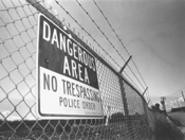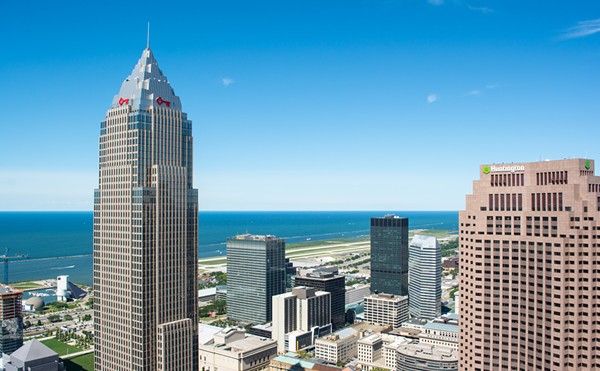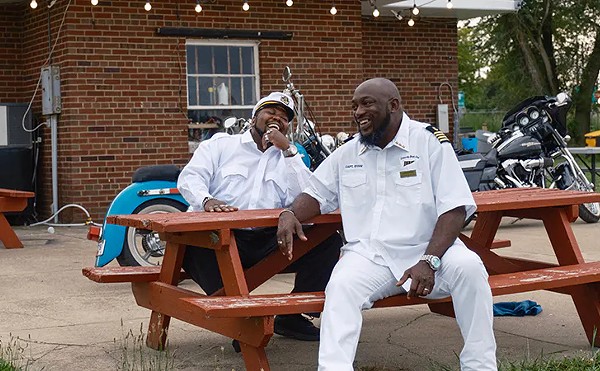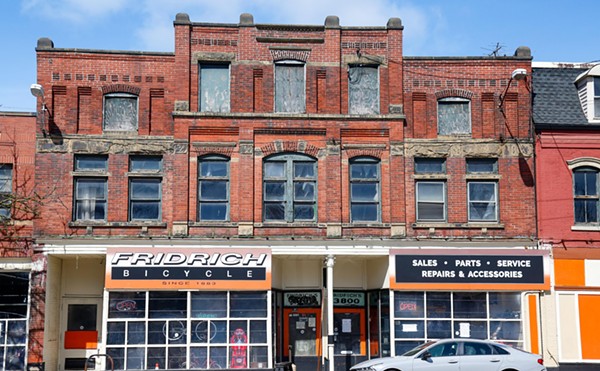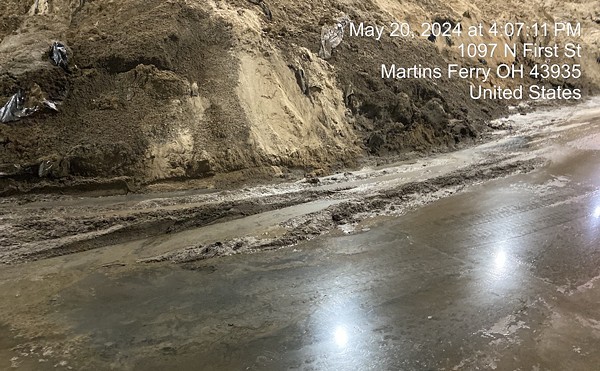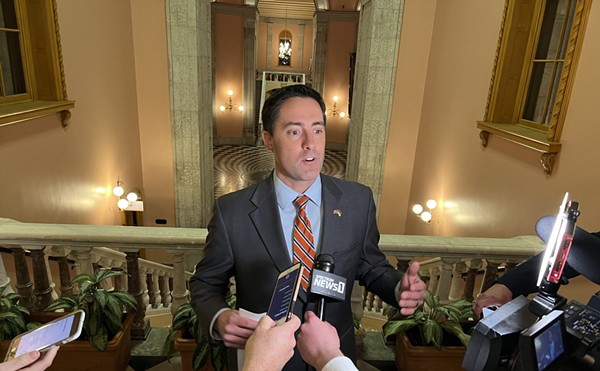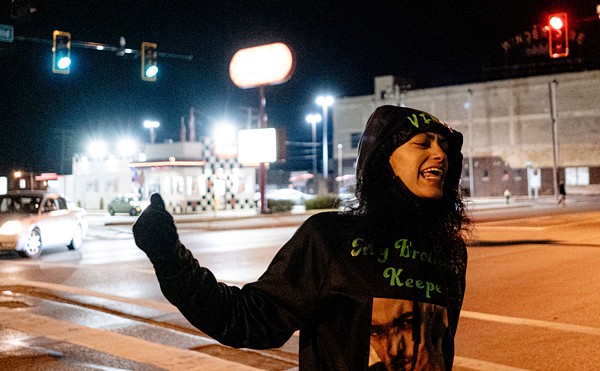The group talks amicably about city politics, and Thompson is congratulated on her performance on a local AM radio show earlier in the day. "That show is heard across the country," one man says. "Hopefully it will get people out here."
And then Thompson and her daughter begin handing out photocopied fliers calling the proposed center a "21st Century Death Camp."
"We don't feel incarceration is a solution to economic development, and we don't feel it's a solution to education," says Thompson, who lives near the former Christian Schmidt & Sons Brewing Co. "This is just a testament to the lack of quality leadership. No municipality would permit this in a white community."
Opponents of the proposed juvenile intervention center -- County Administrator Tom Hayes says the new name is reflective of the broader range of services offered -- seem to have a laundry list of reasons they are opposed to building the facility at East 93rd and Quincy.
The complaints run all over the map: They don't want a juvenile prison in their backyard. The commissioners should put it in a wealthy suburb. More money is spent on prisons than schools. All the money from the project will benefit the wealthy. The commissioners don't care about children. The land is contaminated with asbestos and PCBs.
On that front, at least, the protesters may have a point. Within the next few days, a private firm is expected to release a report on the toxicity of the land. Cleveland Mayor Michael White once called the site "the worst environmental hazard in the city," and today signs posted around the triangular plot, which consists of little more than rubble and four-foot-high weeds, proclaim "Dangerous Area" and warn that the land contains substances that "may endanger public health or safety if released."
Hayes says the county's $2.7 million purchase of the land from a subsidiary of Forest City Enterprises is contingent upon the results of the EPA's assessment. He says the county has money set aside for any necessary cleanup.
"If it is built there, the county will clean it up to the highest residential standards," says Hayes, who has attended 10 community meetings on the project. "Alternatively, if we don't build it, that site remains exactly the way it is, and whatever issues are involved with that site, whatever fears the neighborhood has, they're going to be there for a long time."
The land has been vacant since 1997, when the brewery was disassembled. But the brewery was closed in 1984, around the same time the county began floating the idea of building a new juvenile detention center to replace the overcrowded, outdated facility on East 22nd Street. After years of start-and-stop efforts, political posturing, and an omnipresent not-in-my-backyard mentality, it looked as if the commissioners would be forced to build a five-story facility near the current detention center, costing up to $76 million. It was a plan all sides said was unsatisfactory, but, given the years of delays, was the best deal available.
Then, in February, the commissioners, juvenile court judges, and city reached a compromise to build the center at the proposed location. Supporters said the size of the land -- more than 10 times the acreage of the current site -- would allow the construction of a sprawling, campus-like facility. The current plan calls for three different buildings to house various juveniles who will be at the center while their cases are adjudicated, including separate facilities for serious offenders and those simply needing a few days away from a troubled home situation.
County officials promise the project will bring 200 jobs and that the well-landscaped area will improve the appearance of the neighborhood.
That's part of what has protesters like Thompson so upset.
"I don't want my 10-year-old walking to school, and the most modern thing she sees in the area is a juvenile detention center," Thompson says. "We don't even have a grocery store. And they're acting like this will be a luxury for us."
Cleveland City Councilwoman Patricia Britt, who represents the area, says the new facility will bring nothing but positives to the neighborhood. In addition to the jobs, Britt notes that the complex will mean more police traveling through. "It will be difficult for illicit activities to take place with so much law enforcement traffic," Britt says.
It's tough to get a read on what would make the protesters happy. The literature they distribute claims, "They cannot build gas chambers like their mentor Hitler did, they are forced to be a little more inventive. Why not build the detention center (concentration camp) over toxic waste site and let those n*gger kids die of cancer at an early age?"
Of the five who joined Thompson on a recent Tuesday night, only one lived in the neighborhood; they complained about everything from the proposed convention center to City Council to the plan to increase the security at Cleveland schools.
"I would rather they find a location that is not on polluted land that will cost untold millions of dollars in site cleanup," says Galen Alexander, who lives in the Old Brooklyn neighborhood.
"We're saying, we don't care if the land is cleaned up or not, you're still not going to build it there," Thompson says. "We don't want it there. We're going to stay here until we get justice. We know it's contaminated. We've been trying for years to get someone to clean up the land."
Hayes seems slightly bemused by the opposition. "These are well-intentioned people, but you have to separate out "I don't want that built' versus "The site is hazardous.' They've stuck with the idea that the site is a hazardous site, so you can't put children on it," he says. "Well, we're not gonna put children on a hazardous site."

